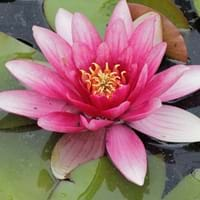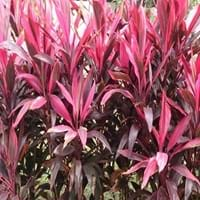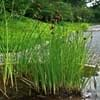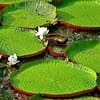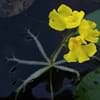Life Span
Perennial
Perennial
Type
Aquatics
Tender Perennial
Origin
World/Pandemic
South America, Southeastern Asia, Australia, New Zealand
Types
Not Available
Cabbage palm, Good luck plant, Ti plant
Habitat
Ponds
Dry and Young forest Heaths, Forest edges, Tropical rainforest
USDA Hardiness Zone
4-9
9-10
AHS Heat Zone
12-1
Not Available
Sunset Zone
21,22
Not Available
Habit
Not Available
Upright/Erect
Minimum Width
Not Available
Flower Color
White, Yellow, Red, Orange, Pink, Magenta, Fuchsia, Coral, Peach, Blue Violet, Ivory
White, Pink
Flower Color Modifier
Bicolor
Not Available
Fruit Color
Green
White, Red, Blue, Green
Leaf Color in Spring
Green, Dark Green
Not Available
Leaf Color in Summer
Green, Dark Green
Not Available
Leaf Color in Fall
Green, Dark Green
Not Available
Leaf Color in Winter
Not Available
Burgundy
Leaf Shape
Round
Long Elliptic
Plant Season
Summer, Fall
Spring, Summer, Fall, Winter
Sunlight
Full Sun, Partial Sun
Full Sun, Partial Sun, Partial shade
Growth Rate
Fast
Not Available
Type of Soil
Clay, Loam, Sand
Not Available
The pH of Soil
Neutral
Not Available
Soil Drainage
Poorly Drained
Well drained
Bloom Time
Indeterminate
Not Available
Tolerances
Wet Site
Cold climate
Where to Plant?
In Water
Ground
How to Plant?
Stem Planting
Divison, Stem Planting
Plant Maintenance
Medium
Medium
Watering Requirements
Plant grows in water
Average Water Needs, Do Not over Water, Do not water frequently, Never Over-water, Water when soil is dry
In Summer
Lots of watering
Lots of watering
In Spring
Moderate
Moderate
In Winter
Average Water
Average Water
Soil pH
Neutral
Acidic, Neutral, Alkaline
Soil Type
Clay, Loam, Sand
Loam, Sand
Soil Drainage Capacity
Poorly Drained
Well drained
Sun Exposure
Full Sun, Partial Sun
Full Sun, Partial Sun, Partial shade
Pruning
Remove damaged leaves, Remove dead branches, Remove dead leaves
Prune after flowering, Remove damaged leaves, Remove dead leaves
Fertilizers
All-Purpose Liquid Fertilizer
All-Purpose Liquid Fertilizer, fertilize in spring, In Late summer
Pests and Diseases
Not Available
Caterpillars, Red blotch
Plant Tolerance
Drought
Drought
Flowers
Showy
Insignificant
Flower Petal Number
Single
Single
Foliage Texture
Coarse
Not Available
Foliage Sheen
Glossy
Not Available
Self-Sowing
Not Available
Yes
Attracts
Fishes
Not Available
Allergy
Not Available
Not Available
Aesthetic Uses
Showy Purposes, Water gardening
Beautification, Landscape Designing, Showy Purposes, Used for decorating walls, fences, gates, hedges, etc.
Beauty Benefits
Not Available
Not Available
Environmental Uses
Air purification
Air purification, Food for insects, Prevent Soil Erosion
Medicinal Uses
Not Available
Menstrual Disorders, Stomach pain, tuberculosis
Part of Plant Used
Leaves, Root, Stem
Leaves
Other Uses
Can be made into a herbal tea, Culinary use, Used as Ornamental plant, Used in herbal medicines
Decoration Purposes, Showy Purposes, Used as Ornamental plant, Used for its medicinal properties
Used As Indoor Plant
Yes
Yes
Used As Outdoor Plant
Yes
Yes
Garden Design
Water Gardens
Container, Feature Plant, Foundation, Houseplant, Tropical
Botanical Name
NYMPHAEA 'Charles de Meurville'
CORDYLINE
Common Name
Charles de Meurville Waterlily, Hardy Daylily
Cordyline
In Hindi
Hardy Daylily
Cordyline
In German
Hardy Daylily
Cordyline
In French
Hardy Daylily
cordyline
In Spanish
Hardy Daylily
cordyline
In Greek
Hardy Daylily
Cordyline
In Portuguese
Hardy Daylily
Cordyline
In Polish
Hardy Daylily
Cordyline
In Latin
Hardy Daylily
Cordyline
Phylum
Magnoliophyta
Magnoliophyta
Class
Magnoliopsida
Liliopsida
Order
Nymphaeales
Asparagales
Family
Nymphaeaceae
Liliaceae
Clade
Angiosperms
Angiosperms, Monocots
Tribe
Not Available
Not Available
Subfamily
Not Available
Lomandroideae
Difference Between Hardy Daylily and Cordyline
If you are confused whether Hardy Daylily or Cordyline are same, here are some features about those plants to help you choose better. Many people think that these two plants have the same characteristics, but one can see Hardy Daylily and Cordyline Information and learn more about it. Fertilizers required for proper growth of Hardy Daylily are All-Purpose Liquid Fertilizer, whereas for Cordyline fertilizers required are All-Purpose Liquid Fertilizer, fertilize in spring and In Late summer. Hence, one should know the basic difference between Hardy Daylily and Cordyline if you are planning to have them in your garden to enhance its beauty.
<
Flowering PlantsImportance of Hardy Daylily and Cordyline
Want to have the most appropriate plant for your garden? You might want to know the importance of Hardy Daylily and Cordyline. Basically, these two plants vary in many aspects. Compare Hardy Daylily and Cordyline as they differ in many characteristics such as their life, care, benefits, facts, etc. Every gardener must at least have the slightest clue about the plants he wants to plant in his garden. Compare their benefits, which differ in many ways like facts and uses. The medicinal use of Hardy Daylily is Not Available whereas of Cordyline is Menstrual Disorders, Stomach pain and tuberculosis. Hardy Daylily has beauty benefits as follows: Not Available while Cordyline has beauty benefits as follows: Not Available.
Compare Facts of Hardy Daylily vs Cordyline
How to choose the best garden plant for your garden depending upon its facts? Here garden plant comparison will help you to solve this query. Compare the facts of Hardy Daylily vs Cordyline and know which one to choose. As garden plants have benefits and other uses, allergy is also a major drawback of plants for some people. Allergic reactions of Hardy Daylily are Not Available whereas of Cordyline have Not Available respectively. Having a fruit bearing plant in your garden can be a plus point of your garden. Hardy Daylily has no showy fruits and Cordyline has no showy fruits. Also Hardy Daylily is not flowering and Cordyline is not flowering . You can compare Hardy Daylily and Cordyline facts and facts of other plants too.
